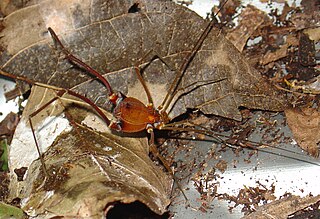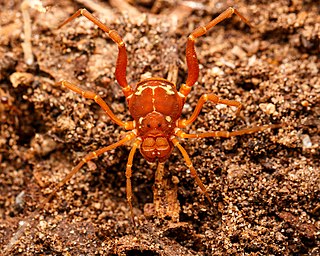
Zingiberaceae or the ginger family is a family of flowering plants made up of about 50 genera with a total of about 1600 known species of aromatic perennial herbs with creeping horizontal or tuberous rhizomes distributed throughout tropical Africa, Asia, and the Americas. Many of the family's species are important ornamental, spice, or medicinal plants. Ornamental genera include the shell gingers (Alpinia), Siam or summer tulip, Globba, ginger lily (Hedychium), Kaempferia, torch-ginger Etlingera elatior, Renealmia, and ginger (Zingiber). Spices include ginger (Zingiber), galangal or Thai ginger, melegueta pepper, myoga, korarima, turmeric (Curcuma), and cardamom.

Eagle is the common name for many large birds of prey of the family Accipitridae. Eagles belong to several groups of genera, some of which are closely related. True eagles comprise the genus Aquila. Most of the 68 species of eagles are from Eurasia and Africa. Outside this area, just 14 species can be found—2 in North America, 9 in Central and South America, and 3 in Australia.

Plovers are a widely distributed group of wading birds belonging to the subfamily Charadriinae.

The Lycopodiaceae are an old family of vascular plants, including all of the core clubmosses and firmosses, comprising 16 accepted genera and about 400 known species. This family originated about 380 million years ago in the early Devonian, though the diversity within the family has been much more recent. "Wolf foot" is another common name for this family due to the resemblance of either the roots or branch tips to a wolf's paw.

Malvaceae, or the mallows, is a family of flowering plants estimated to contain 244 genera with 4225 known species. Well-known members of economic importance include okra, cotton, cacao, and durian. There are also some genera containing familiar ornamentals, such as Alcea (hollyhock), Malva (mallow), and Tilia. The genera with the largest numbers of species include Hibiscus, Pavonia, Sida, Ayenia, Dombeya, and Sterculia.

The insects of the beetle family Chrysomelidae are commonly known as leaf beetles, and include over 37,000 species in more than 2,500 genera, making up one of the largest and most commonly encountered of all beetle families. Numerous subfamilies are recognized, but the precise taxonomy and systematics are likely to change with ongoing research.

Harpalinae is a subfamily of ground beetles that contains more than 3,000 species in 4 tribes worldwide, according to the Carabcat Database. A rarely used common name for the subfamily is the harp beetles. The Harpalinae contain the most apomorphic ground beetles, displaying a wide range of forms and behaviors. Some are, rare among ground beetles, omnivores or even herbivores.

The Acalyphoideae are a subfamily within the family Euphorbiaceae with 116 genera in 20 tribes.

Noctuoidea is the superfamily of noctuid or "owlet" moths, and has more than 70,000 described species, the largest number of any Lepidopteran superfamily. Its classification has not yet reached a satisfactory or stable state. Since the end of the 20th century, increasing availability of molecular phylogenetic data for this hugely successful radiation has led to several competing proposals for a taxonomic arrangement that correctly represents the relationships between the major lineages.

Gonyleptidae is a neotropical family of harvestmen with more than 800 species, the largest in the Suborder Laniatores and the second largest of the Opiliones as a whole. The largest known harvestmen are gonyleptids.

The Cranaidae are a family of neotropical harvestmen within the suborder Laniatores.
Cosmetinae is a subfamily of harvestmen in the family Cosmetidae.

Cynorta is a genus from the subfamily Cynortinae. The genus was first described by Carl Ludwig Koch.
Rhaucus is a genus of harvestmen in the family Cosmetidae. The genus is endemic to the Colombian northern Andes. There are currently seven described species in the genus.

Cynortinae is a subfamily of harvestmen in the family Cosmetidae.
Discosomaticinae is a subfamily of harvestmen in the family Cosmetidae.
Ferkeriinae is a subfamily of harvestmen in the family Cosmetidae.
Flirteinae is a subfamily of harvestmen in the family Cosmetidae.
Metergininae is a subfamily of harvestmen in the family Cosmetidae.
Taitoinae is a subfamily of harvestmen in the family Cosmetidae.












